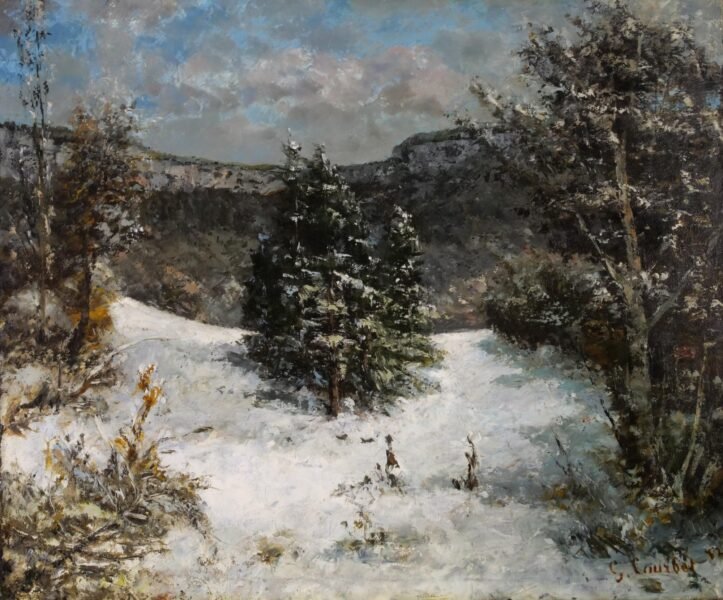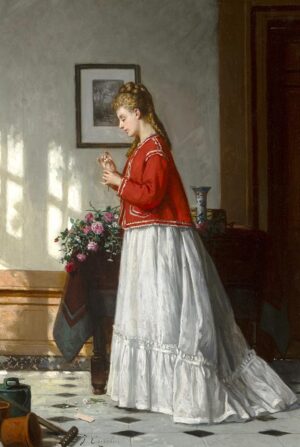Description
“Passage de Neige” (Snowy Landscape) by Gustave Courbet is a masterful example of Courbets skills, capturing the raw and tactile experience of a winter scene. Courbet was particularly drawn to representing the ephemeral, ever-changing quality of snow and the stark beauty of the wintry countryside.
Courbet’s landscapes, especially his snow scenes, stand out for their empirical fidelity and distinctive textures. He layered his canvases with thick, expressive brushwork and sometimes used palette knives, sponges, and rags to evoke the varied surfaces of snowy ground, icy branches, and clouded skies. In “Passage de Neige,” viewers are drawn into a serene, chilly world where the blanket of snow dominates, offset by dark evergreen trees and the subtle hues of winter—steely blues, browns, and dusk-like greys.
Gustave Courbet was a pioneering French painter and the leading figure of the Realism movement in 19th-century art. Born in Ornans, France, in 1819, Courbet rejected both the idealized traditions of Classicism and the emotional excesses of Romanticism, instead aiming to depict the world as it actually appeared, with all its imperfections. Courbet occupies an important place in 19th-century French painting as an innovator and as an artist willing to make bold social statements through his work.
Courbet achieved his first Salon success in 1849 with his painting After Dinner at Ornans. The work earned Courbet a gold medal and was purchased by the state. The gold medal meant that his works would no longer require jury approval for exhibition at the Salon—an exemption Courbet enjoyed until 1857 (when the rule changed)
Courbet was known for his direct, earthy palette and his innovative use of palette knives, creating bold textures and a sense of materiality in his landscapes, portraits, and still lifes. He influenced a generation of later artists, including the Impressionists.
A committed Republican, Courbet was politically active during the tumultuous times of the Paris Commune in 1871. His involvement led to his imprisonment and later exile in Switzerland, where he spent the last years of his life before his death in 1877.
According to the Sotheby’s auction catalog, Jean Jacques Fernier, the Courbet expert, dated this work to 1876 in a letter from March 4, 1991. The signature and date on this original work by Courbet were added later by his student Cherubino Pata. During Courbet’s exile in Switzerland, he smuggled anonymously painted, unsigned works out of the country to his studio in Ornans. There, these works were signed with Courbet’s signature by Cherubino Pata. This painting is a typical Swiss forest landscape from Courbet’s later period.
He was in exile because he was sentenced to reimburse the cost of rebuilding the column on the Place Vendôme. The column had been toppled by revolutionaries in 1871, allegedly incited by Courbet because of his affiliation with anarchist ideas. He fled to Switzerland and died there, never having paid any compensation
Courbet’s legacy lies in his insistence on artistic sincerity and observation, which reshaped the direction of modern art and provided inspiration for generations of avant- garde painters.
In his hometown region, the Musée Courbet in Ornans houses around 60 of his works, offering a comprehensive view of his artistic evolution from youthful works to powerful later pieces, including his landscapes, portraits, and scenes reflecting his political engagement.









Reviews
There are no reviews yet.